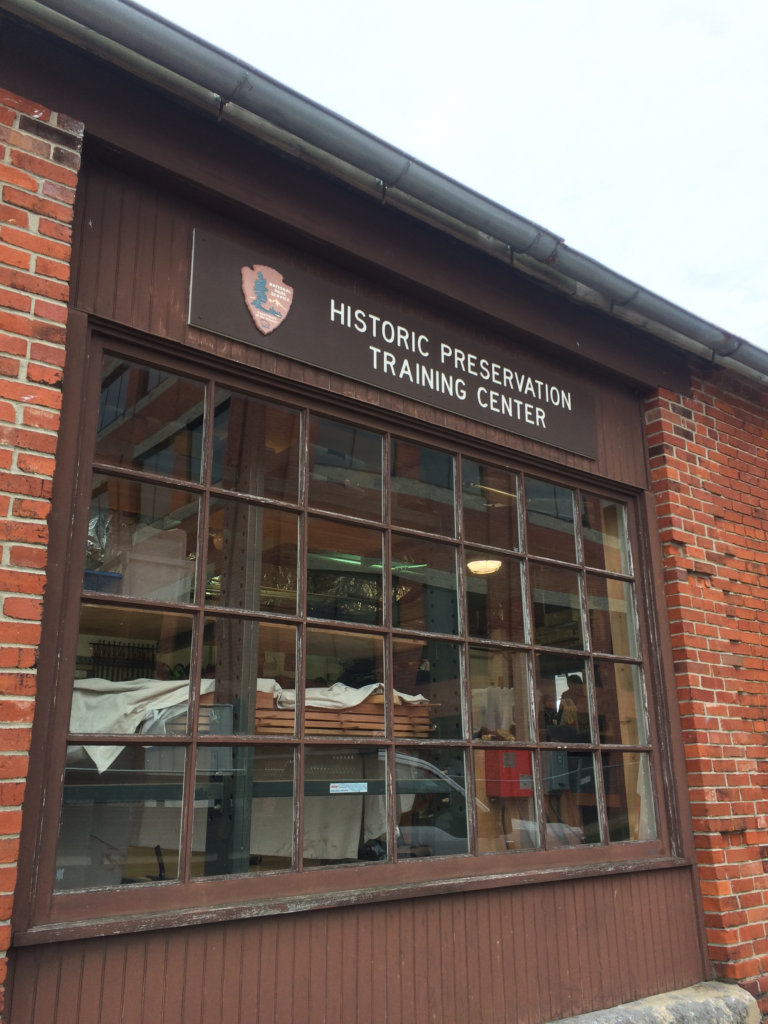
This year’s IPTW took place at the National Park Service’s Historic Preservation Training Center in Frederick, Maryland
A Tale of Two Conferences: Preservation Trades and Technology
by Jeff Larry
During this past weekend’s closing reception for the International Preservation Trades Workshop (IPTW) in Frederick, MD, I was seated for dinner at a table with a diverse bunch. There were recent graduates from the Building Preservation and Restoration Program at Belmont College, and National Park Service employees from both the Washington office and Historic Preservation Training Center. Next to me was a professor who had, earlier in the day, presented on the importance of understanding geometry in planning preservation projects. I could see the historic finishes specialist talking with a stone mason from Scotland as the expansive trussed ceiling of the Armory carried the notes from the fiddle and mandolin players of a Bluegrass band set off to the side. At a row of tables people placed books, old tools and architectural salvage for the auction which would raise funds for students to attend future Workshops. I thought about how different this experience was from September’s Association for Preservation Technology (APT) conference in Buffalo but soon realized that my initial focus on their differences was not nearly as interesting as what they had in common.
Now, to be sure, they are very different events and organizations. APT is a multi-disciplinary, membership organization with a mission to “advance appropriate traditional and new technologies to care for, protect, and promote the longevity of the built environment and to cultivate the exchange of knowledge throughout the international community.” IPTW is presented by The Preservation Trades Network (PTN), a “membership organization founded to provide education, networking and outreach for the traditional building trades. PTN was established on the principle that conservation of the built environment is fundamentally dependent on the work of skilled people in all of the traditional building trades who preserve, maintain and restore historic buildings, and build architectural heritage for the future.”
The most apparent commonality is the belief that we must continually engage and support the next generation, whether it be a recently graduated preservation architect or a young person just starting a traditional building trade. Both groups clearly enjoy the opportunity to gather on such occasions and visit with old friends, tell stories, commiserate, teach and learn. And finally, they share a belief in the importance of historic preservation to better understand our history and as a tool to create and sustain vibrant communities.
I look forward to next year’s conferences and the opportunity to share my experience from some of the fascinating preservation projects we have in store in the coming months at President Lincoln’s Cottage. Stay tuned!!
